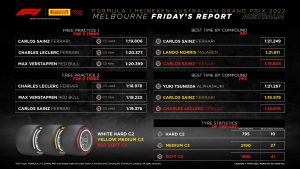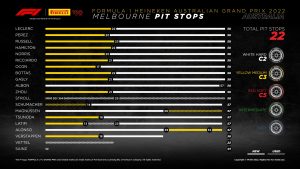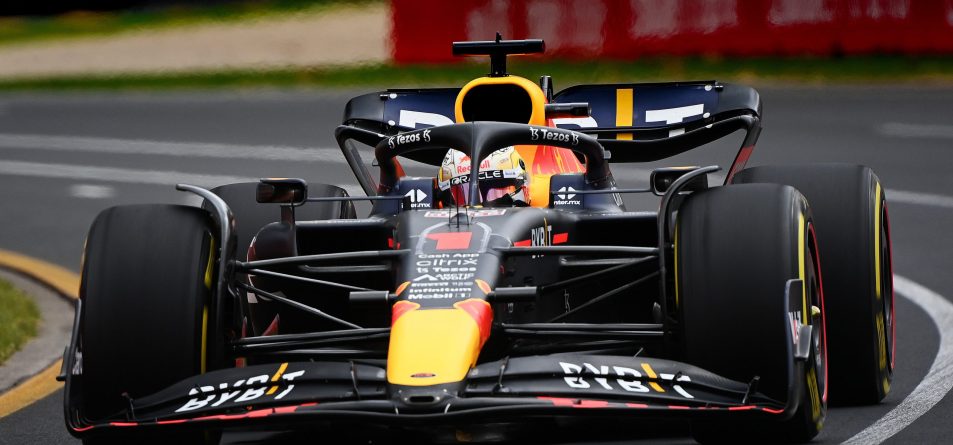How have Pirelli 18 inch tyres performed over 3 Rounds in new era of Formula One racing? Analysis on data provided by Pirelli post racing at F1 Australian Grand Prix on April 8-10 gives insight on tracking tyre performance relative to driver/Team selections all within context of results achieved over course of 3 days.

The F1 Australian GP Albert Park circuit provided new opportunities to test the parameters of tyre selection with Pirelli’s C2 Hard, C3 Medium and C5 Soft range on the newly laid asphalt surface, with total length coming in at 5.303kms. With reduced turns to 14 corners, compared to 27 turns at Jeddah, along with ‘green’ surface and expected increased track evolution over the weekend, all top 3 times for FP1, FP2 and FP3 were on C5 Soft.
While Carlos Sainz (Ferrari), Charles Leclerc (Ferrari) and Max Verstappen (Red Bull Racing) dominating top 3 places on Friday’s practice sessions, FP3 gave a nod to Lando Norris (McLaren) and Sergio Perez (Red Bull Racing) mixing up expectation of top tier drivers heading into Qualifying later on Saturday.
Performance gaps between compounds in FP3 were difference of 1.4 seconds between C2 Hard and C3 Medium, and difference of 1.9 seconds between C3 Medium and C5 Soft. Interestingly, either from elements of track surface, or increased information on tyre performance within scope of aero dynamics of cars- or combination of both- durability of C2 Hard tyres over 795kms divided by 10 sets used equals 79kms per set. Coming in much closer than previous F1 GP’s at Bahrain and Jeddah, C3 Medium tyres over 2190kms divided by 27 sets used equals 81kms per set. And, C5 Soft tyres over 1898kms divided by 41 sets used equals 46kms per set- all from Friday’s sessions.

Such data not only provides Pirelli information on how P Zero tyres perform under the most extreme measures of downforce on track, but also allows for transfer of knowledge on manufacturing race-to-road tyres with developed and proven technology.
All top 10 drivers in Qualifying ran C5 Soft tyres with Charles Leclerc the only driver delivering best lap time below 1.18 seconds, 200th second ahead of Max Verstappen and Sergio Perez in top 3 spots. Race strategy favoured start on C3 Mediums for top 10 drivers, with exception of Alex Albon (Williams), on C2 Hard. Having started last on grid, Albon and Team made remarkable decision to push through on C2’s for entire 57 laps, switching to C5 for final lap.
F1 Australian GP race winner Charles Leclerc pushed C2 Hard tyre performance to deliver fastest lap time of 1.20.260 – quite remarkable result in comparison to C3 Medium fastest lap time of 1.21.322 by Fernando Alonso (Alpine). In fact, top 3 fastest race lap times at Jeddah were on C2 Hard, confirming Pirelli’s objective of increasing window of tyre performance through-out duration of the race, as opposed to decades of driver management of tyres in latter parts of F1 GP racing.
Header Photo: credit: Pirelli.
Words: Sharon Cox.





Comments are closed.